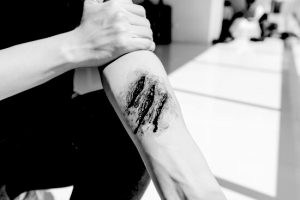When Do You Need Stitches And How To Care For It?
The longer that wounds are left open, the risk of getting infected gets higher as well. Oftentimes, when we get cuts and wounds, we tend to brush it off and let it heal without urgent care. Merely because we are not aware of the harm that it can do to our skin. You might be asking, “When do you need stitches?” At the AURhinoplastySydney site, you can read more about the surgery and their doctors can practically advise about the procedure.
All About Stitches
Skin stitching is almost the same as cloth stitching, it is composed of needles, scissors, and thread. Their main purpose is to close the open wound and help the skin come together, prevent dirt from infecting the cut, and lessen the risk of having noticeable scars. Making it essential for us to seek medical attention if the wound is too wide and large.
Wounds need to be closed by stitching, stapling, or adhesive strips right after its emergence. If this happens to you, wash the injured area gently to prevent infection. Pat dry the wound and see a doctor immediately as you may need stitches.
When To Get Stitches
The wound size, location, severity, and cause all contribute to the basis as to why you need stitches. Let us discuss each probable cause so next time you will immediately know if your cuts would need urgent care.
- Size. Wounds that are too deep, long, wide enough it’s hard for you to pull the skin back together, has rough edges, and contain dirt and particles of an object, need prompt
 medical attention.
medical attention. - Cause. Animal bites, pointed objects, and dirty materials that result to wound needs urgent care. People who get wounds because of these reasons would most likely get a tetanus shot to protect the patient from bacterial infections.
- Bleeds uncontrollably. If the cut is bleeding non-stop despite your efforts to apply pressure to it, that may indicate that you need stitches. Spurting blood and bondage soaking bleeding wounds can lead to excessive blood loss and might even cause you harm.
- Wound location. The location of your cuts would also help the doctors determine if you need stitches. You may seek urgent care if your wounds are located near the joints, in your face and neck, hands, and genitals.
- Infected wounds. For patients that feel feverish or sick, the wound is most likely infected. Check to see if the cuts are starting to get more reddish and if it have red spots around it. In this case, medical attention is necessary and they may need stitches as soon as possible.
Severe Wounds and Cuts
Before going to your doctor, here are a few things to remember.
Do not experiment with your wound. This is applicable most especially to object penetrated wounds. Leave the scissor, knife, nails, or any object that’s stuck in the wound. Let your doctor remove it as they know how these things can affect your tissues if removed inappropriately.
If you are afraid of stitches, refrain from eating foods. The reason is that the doctor might give you anesthesia and the food you consumed may interfere with the procedure.
Apply direct pressure on the wound area. This will help to stop or if not, slow the bleeding. Put a bandage over the wound and hold it in until you reach the hospital.
Clean the wound if you can. Do not use antiseptic, or hydrogen peroxide as this may irritate the wound. Instead, place the wound under running water and let the fluid run through the cuts. Use a dry towel to pat dry the wound.
Medical Stitches Procedure
Stitching or medically known as suturing is the process of closing wounds while utilizing stitches over the outer skin together. The stitches will pull the separated skin close to each other and until it heals. Doctors use different suturing techniques which include the following:
-
- Interrupted suture. In this method, the doctor will give the patient separate stitches. There are plenty of advantages to using this technique. For example, each stitch can be removed without risking the wound since there still other separate stitches that can keep it closed. The downside, however, is that this procedure takes a longer time to finish and could potentially induce infection. To perform interrupted suture, the doctor will start on inserting a needle attached to a thread on the middle part of the cut. He will then close it with a tie and proceed on doing separate stitches throughout the wound.
- Continuous suture. Longer wounds would most likely get continuous stitches. This technique is faster and can be done in a short period of time. Unlike interrupted sutures, continuous sutures are long connected stitches along with the cut. The process includes stitching from one point of the cut to the end and sealing it with a knot.
- Mattress suture. The technique’s main goal is to put tension along the wound edge while stitching it. One of its advantages is that it lessens the visibility of scar marks and helps the wound to heal faster.
Suturing Kit
Medical professionals take pride in handling their medical instruments meticulously. All materials used in suturing are always cleaned and disinfected accordingly. Here are the instruments needed for successful stitching.
- Scalpels are used in various medical surgeries. It comes in different sizes and is just as sharp as a razor blade.
- Hemostat has two varieties, curved and straight. This is used to control bleeding and hold small sutures.
- Forceps is a scissor-like hinged instrument used to grasp and hold medical tools.
- Scissors are used in different surgeries as well. In suturing, it’s used to cut the suture thread.
- Threads or sutures are the most important tool in stitching a wound. It connects the edges of the wound and holds it down during the whole healing process.
- Needles are attached to the threads. This tool is used to pull the thread and close a wound by means of stitching.
Caring For Your Stitches
After getting stitches, it is still recommended to do aftercare procedures to help the wound heal quickly. This will also prevent the risk of infection and avoid particular damages that can ruin the stitches.
First, keep the wound dry for at least a day after the procedure. If bandages are placed on top of it, leave it on as well.
On the second day, wash the wound with clean water. Do not use alcohol or any chemicals that are not suggested by your doctor. Pat dry the wound afterward.
Thirdly, apply a small amount of petroleum jelly and a band-aid to cover the still recovering cut.
Keep the wound clean at all times, avoid exposure to dust and particles that could infect the wound. Do not scratch or touch the sutures if it feels itchy as you could pull them out accidentally.
Avoid swimming or getting exposed to water for a long period of time. This will slow down the healing process of the wound. Sports and activities that can also directly affect your wound are not recommended. Having stitches in your arm and playing volleyball at the same time is not a good idea in the meantime.
is not a good idea in the meantime.
Your doctor might set an appointment for your stitches removal. Make sure to return on the scheduled date because prolonged stitches can cause darker scar marks that are hard to remove.
Overall, there is nothing to worry about if you are about to get stitches, this is a good procedure that enables the wound to heal in the most accurate way. Always remember to get urgent care most importantly if your wounds are severe, deep, and cause non-stop bleeding.

